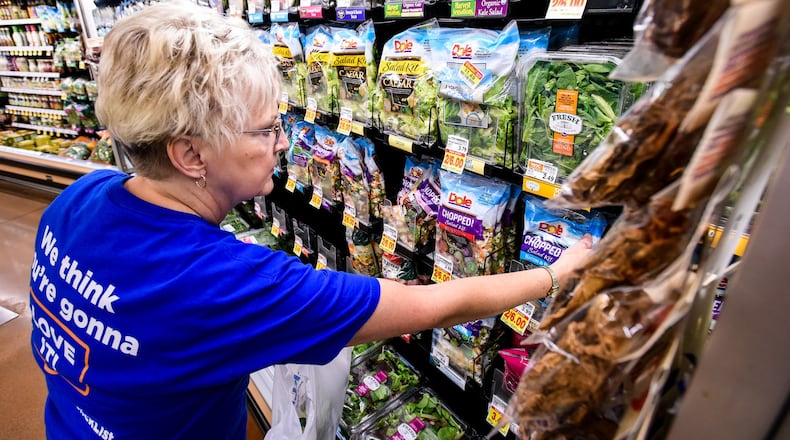MORE: How Kroger and Kettering Health are partnering
Now, 93 percent of Kroger stores offer customers the choice to order online for pickup or delivery, according to Rodney McMullen, Kroger chairman and chief executive.
McMullen told investors during a conference call on Kroger’s newly released first quarter results that since 2014 “we’ve gone from no digital sales dollars, to a 2018 annual run rate of about $5 billion, which will trend toward a $9 billion digital sales run rate in the future.”
“I call this out because while we are only in the middle of our transformation, it’s important to frame up the magnitude of the progress we have made,” McMullen said.
The grocery chain is both a significant area employer and retailer, with more than 110 stores between the Dayton and Cincinnati areas and about 20,000 associates in the Dayton-Cincinnati division.
MORE: Retailer opening 25 Ohio stores, including in Greenville
While Kroger has been investing in online shopping — fueling a 42 percent increase in digital sales for the first quarter — the company is still feeling the pinch from a tough environment for grocery chains.
When Kroger calculated its net sales minus the cost of goods sold, its gross margin was down 40 basis points from the same period last year, down to 22.22 percent, mostly because of a slump in pharmacy margins.
Reuters reported Kroger fell short of Wall Street estimates for quarterly same store sales as fierce competition from Walmart and Amazon worked against the billions the supermarket chain has spent improving stores and its online offering.
Analysts said the soft numbers showed the company was struggling to attract shoppers despite slashing prices to keep up in a crowded U.S. grocery market.
“With the U.S. economy doing really well, particularly with the middle-income consumer, which is Kroger’s consumer … the very tepid same-store sales growth has got people pretty nervous,” Scott Mushkin, an analyst with Wolfe Research, told Reuters.
About the Author
